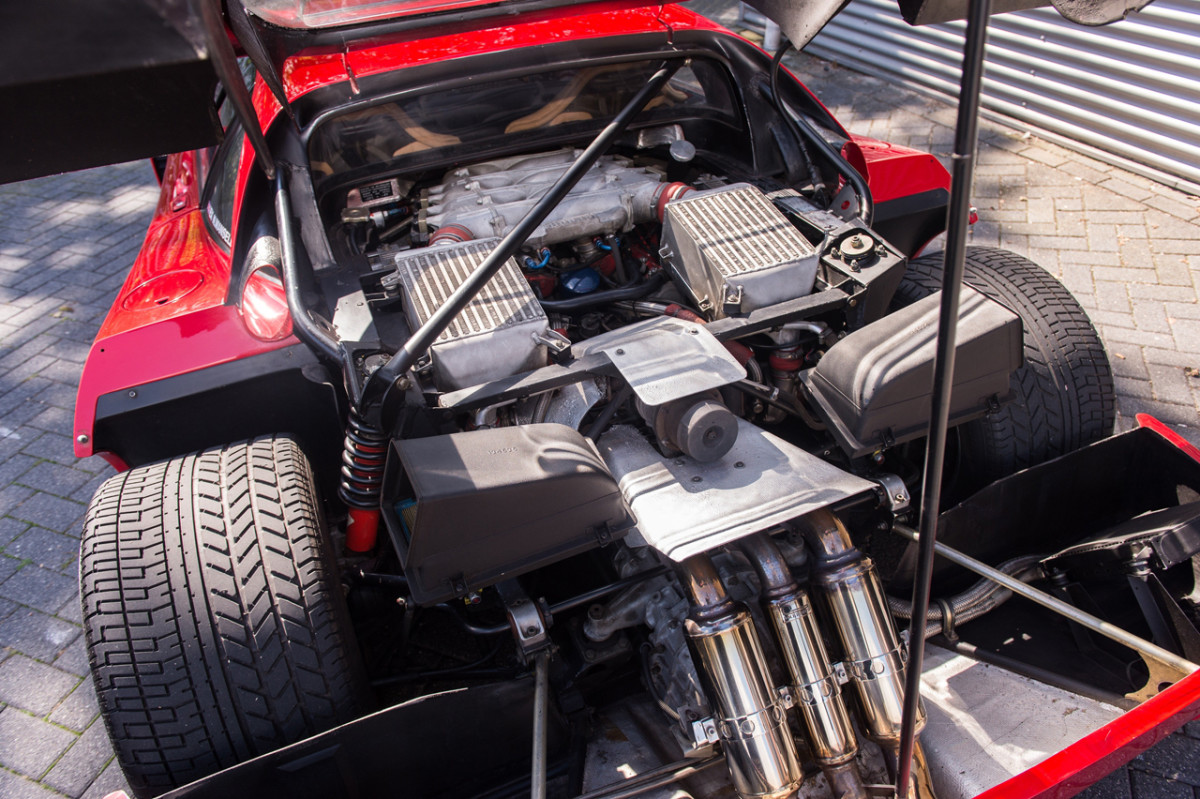It’s been a bad week for Ferrari F40 owners as two of the iconic vintage supercars have spun off on relatively straight roads and wound up with notable amounts of damage. Both of the vehicles were pretty well known, too, with one being the “highest mileage for a Ferrari F40” and the other belonging to McLaren F1 driver Lando Norris. We don’t know who was driving either car at this time, but it has been confirmed that Norris was not behind the wheel of his own vehicle when it crashed.
Related: Ford F-150 Lightning: What’s to love, and what might hold you back
The cause is quite simple. If a car skids out on a straight bit of road, then it’s likely because too much power has gone through the back wheels, which have subsequently broken traction. A skilled enough driver may feel this happening and correct the problem, but that didn’t happen in either case. Read on as we deduce why several million dollars worth of vintage supercar wound up in a ditch. Twice.
A lack of traction control likely contributed

Bonhams
Cars used to be much more difficult to drive, and traction control has arguably made the biggest contribution to the decline in difficulty. In a nutshell, if it senses the wheels slipping, a traction control system will cut power from the engine for you and apply the brakes, slowing the wheels and allowing the vehicle to regain grip.
It’s why you can stick an inexperienced or unskilled driver in a vehicle with 400 horsepower these days, and said driver can take off from a stoplight without immediately ending up backward in a ditch. The Ferrari F40 has 471 horsepower and no traction control, so hit the throttle too hard, and you’ll send a good chunk of that power to the back wheels and likely break traction as a result.
Related: Tesla recalls 240,000 cars (but not for the reason you’d think)
It may not all be the drivers’ fault

Bonhams
On paper, the turbocharger is a brilliant and somewhat simple idea. Force more air into the engine, burn more fuel, and produce more power. Unfortunately, in the 1970s and 80s, they weren’t perfect. They took a little time to kick in, a phenomenon known as “turbo lag.”
Turbo lag isn’t really an issue in modern vehicles, but in decades past, it caused a lot of crashes. It can make the throttle feel a bit disconnected from what the vehicle is doing and might result in a driver who doesn’t know the vehicle too well accelerating a little too hard. When the turbo does kick in, it can send a sudden surge of power through the back wheels, breaking traction and causing the vehicle to spin out.
Weather conditions likely caused one crash

Bonhams
This doesn’t apply to the crash involving Lando Norris’s F40, though, as the road looked pretty dry at the time. But the other F40 that ended up spinning off was driving on a pretty wet road. There’s a reason skid pads are usually soaking wet, and that’s because it’s far easier to break traction and get a car sliding when there’s a thin layer of water to glide on.
We can say that the wet road conditions when the first F40 spun out likely contributed to the crash. The margins between having grip and going into an uncontrollable spin are a lot finer, and it would take far less input to send you off.
Final thoughts
The overall lesson here is that older cars have little to no techy safety systems and require a lot more finesse to drive. If your steed of choice is worth millions of dollars and rarer than hen’s teeth, it might be beneficial to invest in some specialized driving classes before attempting to go fast in questionable conditions. Enzo would be proud.
Related: Burning Teslas in LA add toxic barriers to wildfire cleanup